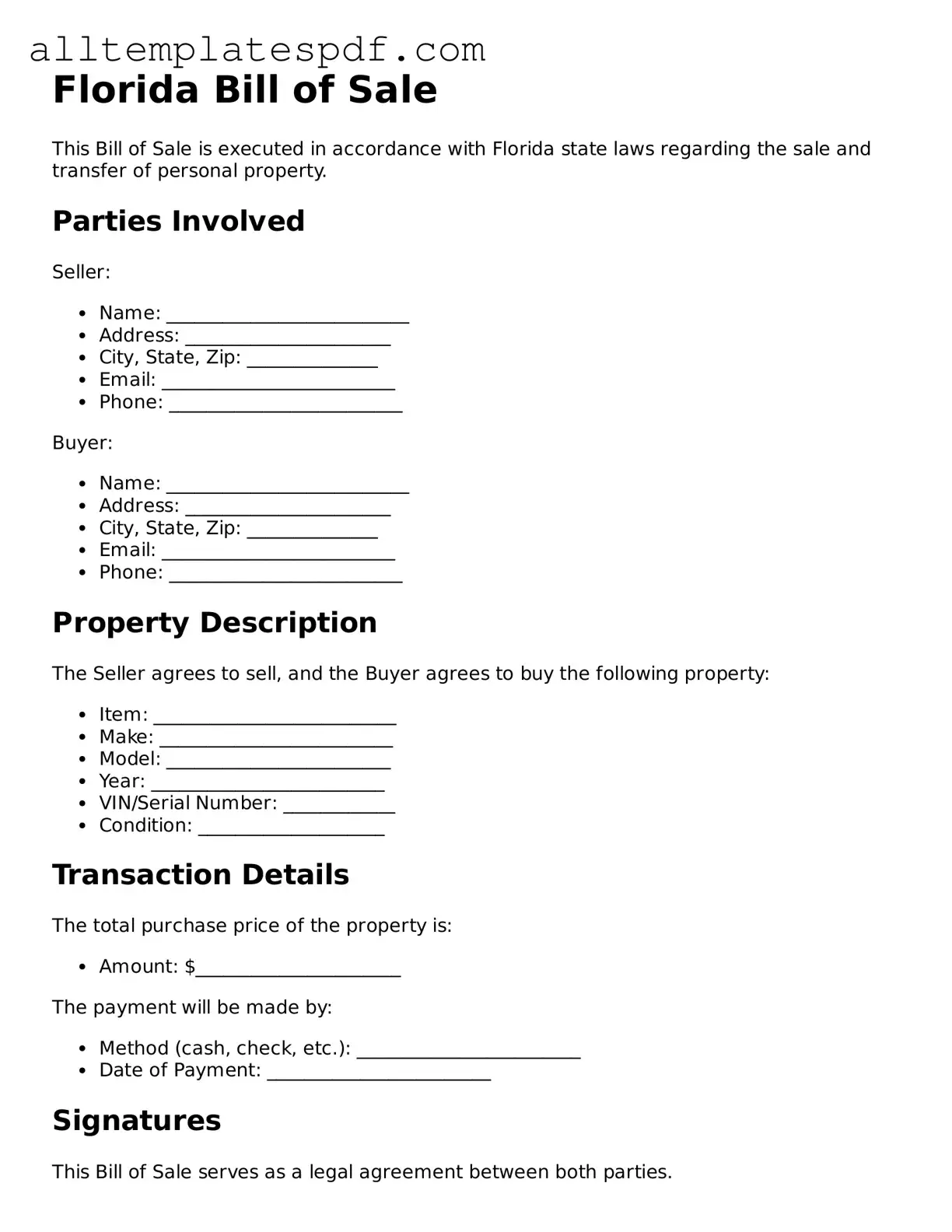When filling out the Florida Bill of Sale form, individuals often overlook important details that can lead to complications later on. One common mistake is failing to include all necessary information about the buyer and seller. It’s crucial to provide full names, addresses, and contact information for both parties. Omitting this information can create confusion regarding ownership and responsibility.
Another frequent error is neglecting to describe the item being sold in sufficient detail. The Bill of Sale should include specific information such as the make, model, year, and Vehicle Identification Number (VIN) for vehicles. For other items, details like brand, condition, and serial numbers are important. Without this information, the document may not serve its purpose effectively, leaving room for disputes.
Many people also make the mistake of not signing the form. A Bill of Sale is only valid if both the buyer and seller sign it. This signature serves as a confirmation of the transaction and the agreement on the terms. Failing to sign the document can render it useless in the eyes of the law, potentially leading to issues down the road.
Lastly, individuals often forget to keep copies of the completed Bill of Sale. After the transaction is finalized, both parties should retain a copy for their records. This document acts as proof of the sale and can be vital if any questions arise in the future. Not having a copy can complicate matters should disputes or claims come up later.
